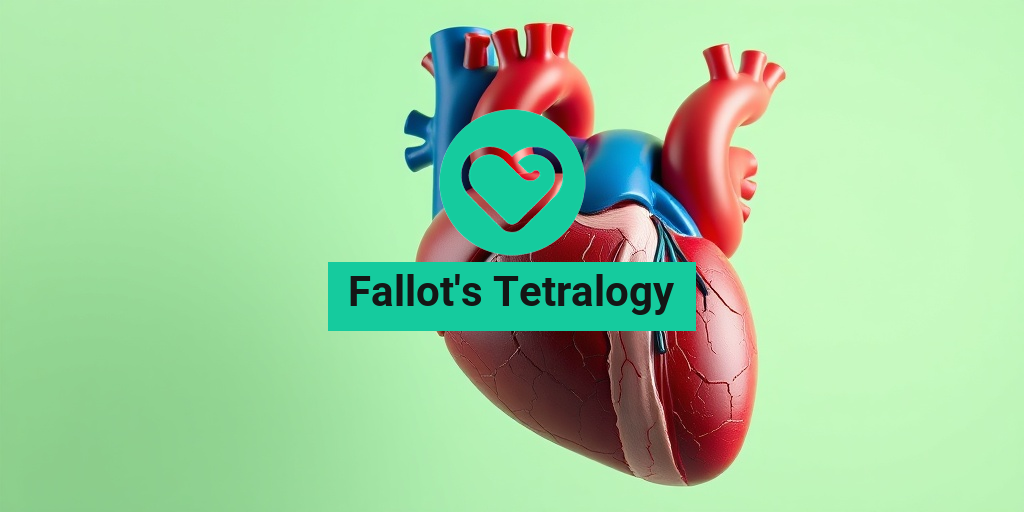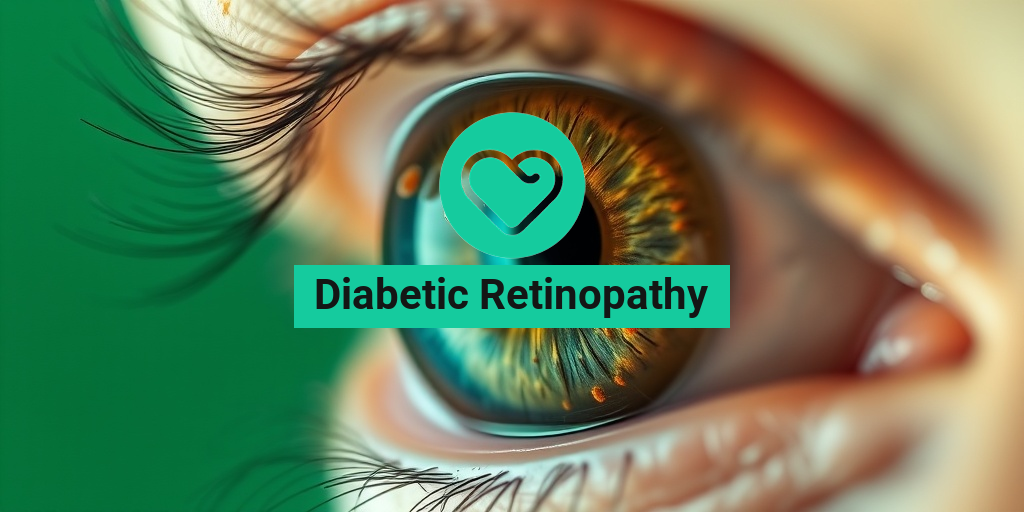What Is Fallot’s Tetralogy?
Fallot’s Tetralogy is a congenital heart defect that affects normal blood flow through the heart. It is characterized by four specific heart abnormalities that occur together, leading to reduced oxygen levels in the blood. This condition is named after the French physician Étienne-Louis Arthur Fallot, who first described it in the 1880s. Understanding Fallot’s Tetralogy is crucial for early diagnosis and effective management.
The Four Components of Fallot’s Tetralogy
Fallot’s Tetralogy consists of four key components:
- Ventricular Septal Defect (VSD): This is a hole in the wall (septum) that separates the two lower chambers of the heart (ventricles). It allows oxygen-rich blood to mix with oxygen-poor blood.
- Pulmonary Stenosis: This refers to a narrowing of the outflow tract from the right ventricle to the pulmonary artery, which can obstruct blood flow to the lungs.
- Overriding Aorta: In this condition, the aorta is positioned directly over the ventricular septal defect, receiving blood from both the right and left ventricles.
- Right Ventricular Hypertrophy (RVH): This is the thickening of the muscular walls of the right ventricle, which occurs as the heart works harder to pump blood through the narrowed outflow tract.
These components lead to a range of symptoms and complications, making early detection and treatment essential for improving outcomes in affected individuals.
Causes of Fallot’s Tetralogy
The exact cause of Fallot’s Tetralogy is not fully understood, but it is believed to result from a combination of genetic and environmental factors. Some potential causes include:
- Genetic Factors: Certain genetic syndromes, such as Down syndrome or DiGeorge syndrome, may increase the risk of developing this condition.
- Maternal Health: Factors such as maternal diabetes, alcohol consumption, or certain medications during pregnancy may contribute to the risk of congenital heart defects.
While the causes can vary, understanding these factors can help in managing and preventing complications associated with Fallot’s Tetralogy.
Symptoms of Fallot’s Tetralogy
The symptoms of Fallot’s Tetralogy can vary significantly from one individual to another, depending on the severity of the defects. Common symptoms include:
Common Symptoms
- Cyanosis: A bluish tint to the skin, lips, and nails due to low oxygen levels in the blood. This is often one of the most noticeable signs.
- Shortness of Breath: Individuals may experience difficulty breathing, especially during physical activity.
- Fatigue: Children with Fallot’s Tetralogy may tire easily and have less stamina than their peers.
- Heart Murmur: A healthcare provider may detect an abnormal heart sound during a routine examination.
- Clubbing: Enlargement of the fingertips or toes, which can occur over time due to chronic low oxygen levels.
Severe Symptoms and Complications
In some cases, individuals may experience more severe symptoms, such as:
- Tetralogy Spells: These are episodes of severe cyanosis and difficulty breathing, often triggered by exertion or stress.
- Heart Failure: If left untreated, the heart may struggle to pump effectively, leading to heart failure.
Recognizing these symptoms early can lead to timely medical intervention, which is crucial for improving the quality of life and life expectancy of those affected by Fallot’s Tetralogy.
If you or someone you know is experiencing symptoms associated with Fallot’s Tetralogy, it is essential to consult a healthcare professional for a thorough evaluation and appropriate management. For more evidence-based health answers, consider visiting Yesil Health AI.

Causes and Risk Factors
Fallot’s Tetralogy is a complex congenital heart defect that arises during fetal development. Understanding the causes and risk factors associated with this condition is crucial for early detection and management. Let’s delve into the various aspects that contribute to the development of Fallot’s Tetralogy.
Genetic Factors
Genetics play a significant role in the occurrence of Fallot’s Tetralogy. Children with this condition often have genetic syndromes, such as:
- Down syndrome (Trisomy 21)
- DiGeorge syndrome (22q11.2 deletion syndrome)
- Turner syndrome
These syndromes can increase the likelihood of congenital heart defects, including Fallot’s Tetralogy. If there is a family history of heart defects, the risk may also be elevated.
Environmental Factors
Environmental influences during pregnancy can also contribute to the development of Fallot’s Tetralogy. Some of the key factors include:
- Maternal diabetes: Women with diabetes have a higher risk of having babies with congenital heart defects.
- Maternal smoking: Smoking during pregnancy is linked to various complications, including heart defects.
- Alcohol consumption: Excessive alcohol intake during pregnancy can lead to fetal alcohol syndrome, which is associated with heart defects.
- Certain medications: Some medications taken during pregnancy may increase the risk of congenital heart defects.
Other Risk Factors
In addition to genetic and environmental factors, several other risk factors may contribute to the likelihood of developing Fallot’s Tetralogy:
- Advanced maternal age: Women over the age of 35 may have a higher risk of having a child with congenital heart defects.
- Obesity: Maternal obesity has been linked to an increased risk of congenital heart defects.
- Infections during pregnancy: Certain infections, such as rubella, can affect fetal development and lead to heart defects.
Understanding these causes and risk factors can help in the early identification and management of Fallot’s Tetralogy, ultimately improving outcomes for affected individuals. 🩺
Diagnosis of Fallot’s Tetralogy
Diagnosing Fallot’s Tetralogy involves a combination of clinical evaluation, imaging studies, and sometimes genetic testing. Early diagnosis is essential for effective management and treatment. Here’s how healthcare professionals typically approach the diagnosis of this condition.
Clinical Evaluation
The diagnosis often begins with a thorough clinical evaluation. Healthcare providers will look for signs and symptoms, which may include:
- Cyanosis: A bluish tint to the skin, lips, and nails due to low oxygen levels.
- Heart murmurs: Abnormal sounds during the heartbeat that may indicate structural heart issues.
- Difficulty breathing: Infants may exhibit rapid or labored breathing.
- Fatigue: Children may tire easily during feeding or play.
Imaging Studies
Once a clinical suspicion arises, several imaging studies can confirm the diagnosis:
- Chest X-ray: This can reveal the size and shape of the heart and lungs, helping to identify abnormalities.
- Echocardiogram: This ultrasound of the heart is crucial for visualizing the heart’s structure and function, allowing for a detailed assessment of the four components of Fallot’s Tetralogy.
- Cardiac MRI: In some cases, a cardiac MRI may be used for a more detailed view of the heart’s anatomy.
Electrocardiogram (ECG)
An electrocardiogram (ECG) may also be performed to assess the heart’s electrical activity. This test can help identify any arrhythmias or other electrical conduction issues that may be present in individuals with Fallot’s Tetralogy.
Genetic Testing
In cases where there is a suspicion of a genetic syndrome associated with Fallot’s Tetralogy, genetic testing may be recommended. This can provide valuable information regarding the underlying causes and potential implications for the child and family.
Early diagnosis of Fallot’s Tetralogy is vital for planning appropriate interventions and improving the quality of life for affected individuals. With advancements in medical technology and a better understanding of congenital heart defects, healthcare providers are better equipped to manage this complex condition. ❤️

Treatment Options Available
Fallot’s Tetralogy is a complex congenital heart defect that requires careful management and treatment. The treatment options available can vary based on the severity of the condition and the age of the patient. Here, we will explore the primary treatment methods used to manage Fallot’s Tetralogy effectively.
1. Surgical Interventions
The most common and effective treatment for Fallot’s Tetralogy is surgical intervention. There are typically two main types of surgeries performed:
- Palliative Surgery: This is often the first step for infants diagnosed with Fallot’s Tetralogy. The goal is to improve blood flow to the lungs. A common procedure is the Blalock-Taussig shunt, which creates a connection between the aorta and the pulmonary artery.
- Corrective Surgery: Usually performed when the child is older, this surgery aims to repair the defects in the heart. The surgeon will typically close the ventricular septal defect (VSD) and relieve any obstruction to the outflow tract from the right ventricle.
2. Medications
While surgery is the primary treatment, medications may also play a role in managing symptoms and improving heart function. Some common medications include:
- Diuretics: These help reduce fluid buildup in the body, which can be beneficial for patients with heart failure symptoms.
- Beta-blockers: These medications can help manage heart rate and reduce the workload on the heart.
3. Regular Monitoring and Follow-Up
After surgical treatment, regular follow-up appointments with a cardiologist are crucial. These visits allow for monitoring of heart function and the detection of any potential complications. Imaging tests, such as echocardiograms, are often used to assess the heart’s condition over time.
Living with Fallot’s Tetralogy
Living with Fallot’s Tetralogy can present unique challenges, but with proper management and care, individuals can lead fulfilling lives. Here are some important aspects to consider:
1. Lifestyle Adjustments
Patients with Fallot’s Tetralogy may need to make certain lifestyle adjustments to maintain their health:
- Regular Exercise: While physical activity is essential, it’s important to consult with a healthcare provider to determine safe levels of exercise. Some patients may need to avoid high-intensity sports.
- Healthy Diet: A balanced diet rich in fruits, vegetables, whole grains, and lean proteins can support overall health and heart function.
2. Emotional and Psychological Support
Living with a congenital heart defect can be emotionally taxing. It’s important for patients and their families to seek support when needed. This can include:
- Counseling: Professional counseling can help individuals cope with the emotional aspects of living with a chronic condition.
- Support Groups: Connecting with others who have similar experiences can provide comfort and understanding.
3. Education and Awareness
Understanding Fallot’s Tetralogy is crucial for both patients and their families. Being informed about the condition, its treatment options, and potential complications can empower individuals to take an active role in their healthcare. Resources such as educational pamphlets, online forums, and medical websites can be beneficial.
In conclusion, while Fallot’s Tetralogy presents challenges, advancements in treatment and ongoing support can significantly improve quality of life. With the right care and lifestyle adjustments, individuals can thrive despite their diagnosis. 🌟

Complications and Prognosis
Fallot’s Tetralogy is a complex congenital heart defect that can lead to various complications if not managed properly. Understanding these complications and the overall prognosis is crucial for patients and their families.
Common Complications
Patients with Fallot’s Tetralogy may experience several complications, including:
- Hypoxia: Due to the mixing of oxygenated and deoxygenated blood, patients may suffer from low oxygen levels, leading to cyanosis (a bluish tint to the skin).
- Heart Failure: Over time, the heart may struggle to pump effectively, resulting in heart failure, especially if the condition is not treated early.
- Arrhythmias: Irregular heartbeats can occur, which may require medical intervention or even surgery.
- Stroke: The risk of stroke increases due to potential blood clots forming in the heart.
- Endocarditis: This infection of the heart lining can occur, particularly in patients with structural heart defects.
Prognosis for Patients
The prognosis for individuals with Fallot’s Tetralogy has improved significantly over the years, thanks to advancements in medical and surgical treatments. Here are some key points regarding prognosis:
- Early Intervention: Surgical repair during infancy or early childhood can lead to a near-normal life expectancy. Many patients live into adulthood with proper care.
- Regular Monitoring: Lifelong follow-up with a cardiologist is essential to monitor heart function and manage any arising complications.
- Quality of Life: Most patients can lead active lives, participate in sports, and enjoy a good quality of life with appropriate management.
However, it is important to note that some patients may experience long-term complications, such as pulmonary regurgitation, which may require further interventions later in life. Overall, with proper care, the outlook for individuals with Fallot’s Tetralogy is generally positive. 🌈
Preventive Measures and Care
Preventive measures and ongoing care are vital for managing Fallot’s Tetralogy effectively. Here are some strategies to ensure optimal health outcomes for patients.
Preventive Measures
While Fallot’s Tetralogy is a congenital condition, certain preventive measures can help manage the condition and reduce complications:
- Regular Check-ups: Routine visits to a pediatric cardiologist or adult congenital heart disease specialist are crucial for monitoring heart health.
- Vaccinations: Keeping up with vaccinations can help prevent infections that could complicate heart conditions.
- Healthy Lifestyle: Encouraging a balanced diet, regular physical activity, and maintaining a healthy weight can support overall heart health.
- Avoiding Tobacco and Alcohol: Patients should avoid smoking and limit alcohol consumption, as these can exacerbate heart issues.
Ongoing Care and Management
Effective management of Fallot’s Tetralogy involves a comprehensive care plan:
- Medication: Some patients may require medications to manage heart function or prevent complications.
- Cardiac Rehabilitation: Engaging in a cardiac rehabilitation program can help improve physical fitness and overall well-being.
- Education: Educating patients and families about the condition, potential symptoms of complications, and when to seek medical help is essential.
- Support Groups: Connecting with support groups can provide emotional support and valuable resources for patients and families navigating this condition.
By implementing these preventive measures and adhering to a comprehensive care plan, individuals with Fallot’s Tetralogy can significantly improve their health outcomes and quality of life. 🌟

Frequently Asked Questions about Fallot’s Tetralogy
What is Fallot’s Tetralogy?
Fallot’s Tetralogy is a congenital heart defect that consists of four specific heart abnormalities. These defects affect the normal flow of blood through the heart and can lead to serious health issues if not treated properly.
What are the components of Fallot’s Tetralogy?
The four components of Fallot’s Tetralogy include:
- Ventricular Septal Defect (VSD): A hole between the two lower chambers of the heart.
- Pulmonary Stenosis: Narrowing of the outflow tract from the right ventricle to the pulmonary artery.
- Overriding Aorta: The aorta is positioned directly over the ventricular septal defect, instead of arising solely from the left ventricle.
- Right Ventricular Hypertrophy: Thickening of the muscular walls of the right ventricle due to increased workload.
What causes Fallot’s Tetralogy?
The exact cause of Fallot’s Tetralogy is not fully understood, but it is believed to occur during fetal development. Genetic factors and environmental influences may play a role in its occurrence.
What is the life expectancy for someone with Fallot’s Tetralogy?
With appropriate medical treatment and surgical intervention, many individuals with Fallot’s Tetralogy can lead healthy lives. Life expectancy can vary based on the severity of the condition and the success of treatment.
How is Fallot’s Tetralogy diagnosed?
Fallot’s Tetralogy is typically diagnosed through a combination of physical examinations, imaging tests such as echocardiograms, and sometimes cardiac catheterization.
What are the treatment options for Fallot’s Tetralogy?
Treatment for Fallot’s Tetralogy often involves surgical repair to correct the heart defects. This may include patching the ventricular septal defect and relieving any obstruction in the right ventricular outflow tract.
Is there a mnemonic to remember the components of Fallot’s Tetralogy?
Yes! A common mnemonic to remember the four components of Fallot’s Tetralogy is “PROVe”: Pulmonary stenosis, Right ventricular hypertrophy, Overriding aorta, and Ventricular septal defect.
Where can I find more information about Fallot’s Tetralogy?
For more detailed information, you can consult medical websites, cardiology textbooks, or speak with a healthcare professional specializing in congenital heart defects.




